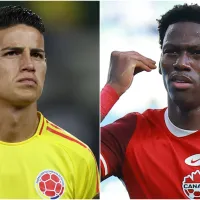There are changes in store for the 2026 World Cup. It is coming to North America. Therefore, it is the first World Cup with three joint hosts.
A quick word on the World Cup recently passed, though. FIFA won. FIFA faced numerous controversies regarding the tournament in Qatar and the policies and history involved. Those issues multiplied as the tournament neared. Same-sex relationships, alcohol consumption and the countless reports of migrant worker deaths marred the tournament.
In the end, the quality of play wiped that smear away from FIFA. End-to-end drama and Lionel Messi’s crowning moment are the points of history for the 2022 World Cup.
Unfortunately, the human rights abuses relegate to a footnote in the competition’s lore.
At least one of two things have to change in order to say any protests against this World Cup bore fruit. One, FIFA’s host selection process needs to be more vigorous in the future. It must place an emphasis on human rights records. Two, hosts, such as Qatar, change after hosting the event.
It is unlikely for either of these to occur. The tournament itself was incredible. The guilt of enjoying the competition on the field knowing what happened off takes over.
Changes coming in the 2026 World Cup
The single biggest change coming in 2026 is an increase in the number of participants. Rather than the 32 teams competing from 1998 to 2022, there are 48 teams lined up for 2026.
UEFA’s participation goes from 13 teams to 16. AFC (Asia) doubles its number of teams guaranteed a spot from 4 to 8, as will CONCACAF, which goes from 3 to 6. CAF (Africa) goes one better as they go from 4 to 9. CONMEBOL (South America) goes from 4 guaranteed places to 6. But the biggest winner is New Zealand. Oceania get a guaranteed spot. It is hard to see any Oceania team disposing of New Zealand in its qualification.
In addition to the guaranteed spots, the Intercontinental Playoffs remain. Those get two final spots.
Quantity over Quality?
The jump in 1998 to 32 came after four tournaments with 24 teams. One could certainly argue that increasing the number of teams to 48 may hurt quality. Yet, keep in mind that for the 1982 World Cup, when it rose to 24, 109 nations attempted to qualify. For the most recent World Cup in Qatar, 211 nations competed in qualifications. The number of soccer federations on the planet almost doubled. This is clearly justification to double the number of teams in the final tournament comparing 1982 to 2026.
Of course, the number of participants has very little to do with the number of nations. Rather, it is FIFA’s desire to “spread the wealth.” Or, for those who do not mind honesty, FIFA’s desire to make more money.
In truth, it’s hard to see a negative in the expansion. The days of a 9-0 scoreline in World Cups are a thing of the past. May I remind you that Saudi Arabia defeated eventual winners Argentina at the beginning of the 2022 World Cup. And, certainly, the play of Morocco, which finished fourth, is more proof that participants outside of UEFA & CONMEBOL can no longer be taken for granted.
Participation in future World Cups gives smaller soccer nations necessary experience to perform better as time runs.
How does the tournament Work?
As of now, FIFA have not confirmed the format of the 48-team tournament. Initially, FIFA set the Group Stage to have 16 groups of 3 teams. The top two teams advance from each group into a 32-team knockout round.
This is a bad idea. The tournament itself only sees a marginal increase in the number of matches given the increase in the number of teams. This format brings the total number of games from 64 to 80. Moreover, the number of matches any team plays to reach the final, seven, does not change.
Still, the major concerns of a three-team group stage go beyond this. Order of play gives select teams a major advantage over others. For example, one team may have rest days before a knockout stage. Another team knows what result it needs in the second group stage game while another team is helplessly watching.
Overall, two matches to determine advancement is hard to justify. Fortunately, the third matchday at the 2022 World Cup swayed FIFA President Gianni Infantino away from that. Drama prevailed as South Korea advanced over Uruguay, and Germany succumbed to a group stage exit despite winning. In both instances, the eliminated team won, but did not do enough because of results in simultaneous games.
If the 4-team per group is to be retained, it would mean 12 groups of 4 teams. In turn, the tournament needs eight of the 12 third-place teams to advance. The European Championship uses this format. This yields 104 total games for the 2026 World Cup. That is a huge increase from the 64 presently. Consequently, the tournament runs significantly longer than its current monthlong standing.
FIFA makes a decision in its Congress in 2023.
The new era
The number of participants aside, the 2026 World Cup will be the first World Cup held by 3 nations. A big change from Qatar where all but 1 stadium was within a 15-minute car ride. The World Cup venues in 2026 spread over four time zones and where a national team lands in the final group stage draw could make a big difference.
This tournament returns to the traditional timeline of summer. I was the first to protest playing the 2022 Qatar games in November/December. It went against all that I hold holy about club soccer. But, I have to admit that I was wrong. We got to see players at the peak of their conditioning. And I believe it very much showed in the final product. And when we return to league soccer in just a few days, nobody will complain about the month-long pause. Things will just pick up where they were left off and only extend seasons slightly into the month of June.
Come 2026, the vast geographical area the World Cup covers along with inevitable summer fatigue for players will likely only make us look back to 2022 nostalgically as one of the best World Cups in modern history – footnotes and all.














